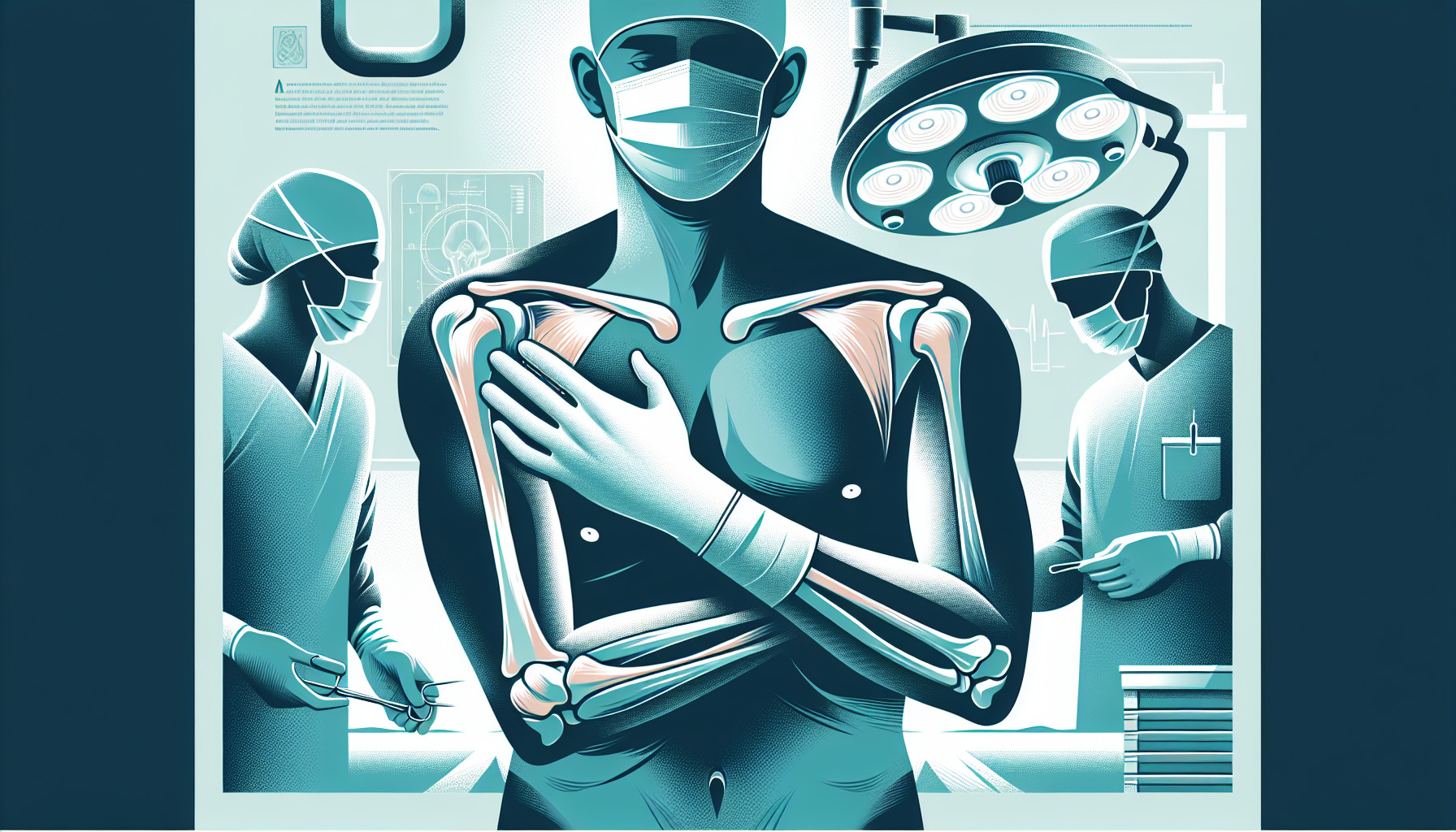Our Summary
This research looked at how the movement and function of the shoulder changes over time after a special type of shoulder surgery called reverse shoulder arthroplasty. The study included 19 patients who had this surgery. The researchers studied the patients’ shoulder movements and used a system to track these movements over time - at 3, 6, and 18 months after surgery. They also looked at how well the patients could use their arms and shoulders by using a special score.
The results showed that overall, the patients were able to lift their arms higher over time after surgery. The rhythm of movement between the shoulder blade and upper arm bone was similar in both the operated shoulder and the other, unaffected shoulder at the final follow-up. The movement of the shoulder blade was also similar in both shoulders 18 months after surgery. Furthermore, the patients’ ability to use their arms and shoulders improved over time after surgery.
The conclusion was that this type of shoulder surgery may improve the movement and function of the shoulder over time. The study suggests that focusing on stabilizing the shoulder blade and controlling the deltoid muscle (the muscle that forms the rounded contour of the shoulder) in the rehabilitation program after surgery may further improve shoulder movement and function.
FAQs
- What is reverse shoulder arthroplasty and how does it affect the movement and function of the shoulder?
- How does the shoulder movement change over time after undergoing reverse shoulder arthroplasty?
- What strategies may further improve shoulder movement and function after undergoing reverse shoulder arthroplasty?
Doctor’s Tip
A doctor might tell a patient about shoulder replacement:
It is important to follow your rehabilitation program after surgery to improve shoulder movement and function. Focus on stabilizing the shoulder blade and controlling the deltoid muscle to see further improvement. Make sure to attend all follow-up appointments and communicate any concerns or issues with your healthcare team. With proper care and dedication to your recovery, you can expect to see positive results in the movement and function of your shoulder over time.
Suitable For
Patients who are typically recommended for shoulder replacement surgery are those who have severe shoulder pain and stiffness that does not improve with conservative treatments such as physical therapy, medications, and injections. Other factors that may indicate the need for shoulder replacement surgery include:
- Severe arthritis in the shoulder joint
- Chronic rotator cuff tears that have not responded to other treatments
- Previous unsuccessful shoulder surgeries
- Inability to lift the arm or perform daily activities due to shoulder pain and dysfunction
It is important for patients to undergo a thorough evaluation by a orthopedic surgeon to determine if shoulder replacement surgery is the best option for them. The decision to proceed with surgery should be based on the individual patient’s symptoms, functional limitations, and overall health.
Timeline
Overall, the timeline of what a patient experiences before and after shoulder replacement surgery may look something like this:
Before surgery:
- Patient experiences chronic shoulder pain, limited range of motion, and difficulty performing daily activities.
- Patient undergoes thorough evaluation by a surgeon to determine if shoulder replacement surgery is necessary.
- Surgery is scheduled, and patient undergoes pre-operative testing and preparation.
After surgery:
- Immediately post-op: Patient may experience pain, swelling, and limited mobility in the shoulder.
- Physical therapy and rehabilitation begin to help regain strength and range of motion in the shoulder.
- Follow-up appointments with the surgeon to monitor progress and address any concerns.
- Over time, patient gradually improves shoulder movement and function.
- At 3, 6, and 18 months post-op: Patient continues physical therapy and rehabilitation to further improve shoulder movement and function.
- Final follow-up at 18 months: Patient’s ability to use their arms and shoulders has significantly improved, and they may have regained near-normal range of motion and function in the shoulder.
Overall, the timeline of recovery after shoulder replacement surgery can vary for each patient, but with proper rehabilitation and follow-up care, most patients can expect significant improvement in shoulder movement and function over time.
What to Ask Your Doctor
- What type of shoulder replacement surgery is being recommended for me?
- What are the potential risks and complications associated with shoulder replacement surgery?
- How long is the recovery process after shoulder replacement surgery?
- What type of physical therapy or rehabilitation will be necessary after surgery?
- How long will it take to regain full range of motion and strength in my shoulder after surgery?
- Will I need any assistive devices or modifications to my daily activities after surgery?
- How often will I need follow-up appointments to monitor my progress after surgery?
- Are there any specific exercises or activities that I should avoid after shoulder replacement surgery?
- What should I do if I experience any pain, swelling, or other concerning symptoms after surgery?
- What are the long-term expectations for the function and movement of my shoulder after surgery?
Reference
Authors: Yildiz TI, Kara D, Demirci S, Sevinç C, Ulusoy B, Eraslan L, Aksoy T, Huri G, Duzgun I. Journal: Clin Biomech (Bristol). 2023 Jul;107:106013. doi: 10.1016/j.clinbiomech.2023.106013. Epub 2023 May 25. PMID: 37267895
